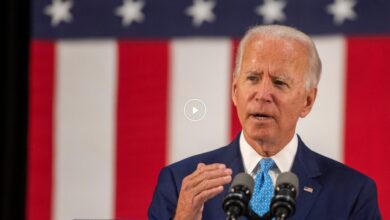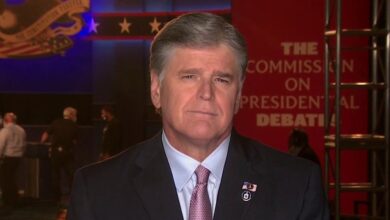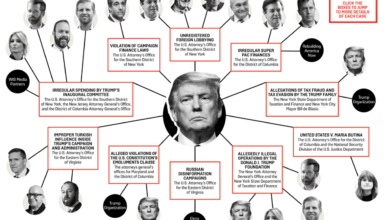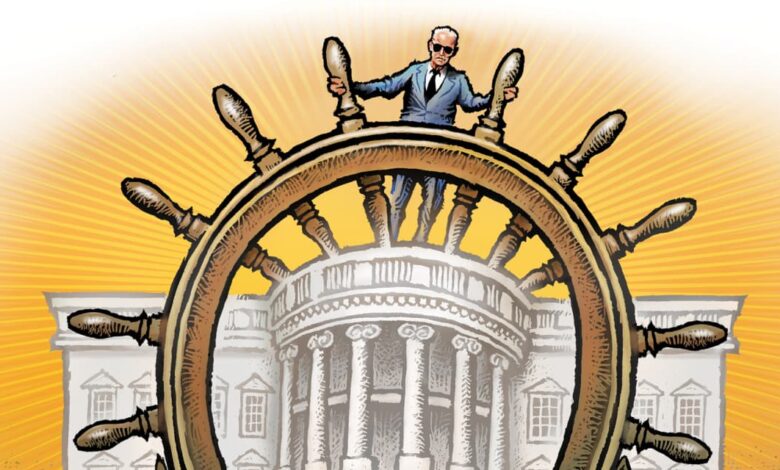
Biden Bets on Economy as Election Strategy
Biden Bets on Economy as Election Strategy: In a political landscape increasingly defined by economic anxieties, President Biden is banking on a strong economy as a key ingredient for his reelection bid. His economic policies, a blend of infrastructure spending, tax initiatives, and labor market reforms, are not merely aimed at boosting economic growth but also strategically crafted to resonate with voters.
The Biden administration is actively framing its economic agenda as a success story, emphasizing the positive impacts of its policies on job creation, wage growth, and economic stability. This narrative, however, faces challenges from persistent inflation, supply chain disruptions, and a global economic landscape marked by uncertainty.
Biden’s Economic Strategy

President Biden’s economic strategy, often referred to as “Bidenomics,” is a multifaceted approach aimed at fostering a more equitable and resilient American economy. This strategy emphasizes government investment, particularly in infrastructure and clean energy, alongside policies designed to support workers and families.
Infrastructure Investment
Biden’s economic strategy places a significant emphasis on infrastructure investment. The American Jobs Plan, a cornerstone of this strategy, proposes a massive $2 trillion investment in infrastructure projects across the country. This includes funding for roads, bridges, airports, public transit, broadband internet, and clean energy projects.
The rationale behind this investment is multifaceted. First, it is intended to create jobs and stimulate economic growth. By investing in infrastructure, the government aims to generate demand for labor and materials, thereby boosting economic activity. Second, infrastructure investment is seen as a way to enhance productivity and competitiveness.
Improved transportation networks, for example, can facilitate trade and commerce, while investments in broadband infrastructure can support innovation and economic development.Third, infrastructure investment is seen as a way to address climate change. The American Jobs Plan includes significant funding for clean energy projects, such as renewable energy sources and electric vehicle charging stations.
The American Jobs Plan represents a significant departure from the approach of previous administrations, which often relied on private sector investment to fund infrastructure projects. Biden’s strategy prioritizes government investment, arguing that it is necessary to address the scale of the infrastructure needs facing the country.
Tax Policies
Biden’s economic strategy also includes a number of tax policies aimed at promoting economic growth and fairness. One key element of this strategy is the American Families Plan, which proposes a number of tax credits and benefits for families, including expanded access to affordable childcare, universal pre-K, and paid family leave.
The rationale behind these policies is to support families and reduce the burden of childcare and other expenses, allowing parents, particularly women, to participate more fully in the workforce.Another key element of Biden’s tax strategy is a focus on increasing taxes on corporations and high-income earners.
The rationale behind this approach is to raise revenue for government programs and to reduce income inequality. Biden’s tax proposals have been met with opposition from Republicans, who argue that they will stifle economic growth and discourage investment.
The debate over Biden’s tax proposals highlights the fundamental differences between the two parties’ economic philosophies. Democrats tend to favor a more interventionist approach, with the government playing a larger role in the economy, while Republicans generally prefer a more market-oriented approach, with less government intervention.
Labor Market Initiatives
Biden’s economic strategy also includes a number of initiatives aimed at strengthening the labor market and improving worker well-being. One key element of this strategy is the Raise the Wage Act, which proposes to raise the federal minimum wage to $15 per hour.
The rationale behind this proposal is to increase wages for low-income workers and to reduce poverty. Another key element of Biden’s labor market strategy is the Protecting the Right to Organize Act, which aims to make it easier for workers to unionize.
The rationale behind this proposal is to give workers more power in the workplace and to ensure that they have a voice in negotiating wages and working conditions. Biden’s labor market initiatives have been met with opposition from business groups, who argue that they will increase labor costs and reduce job creation.
The debate over Biden’s labor market initiatives highlights the ongoing tension between labor and management in the United States.
Election Strategy
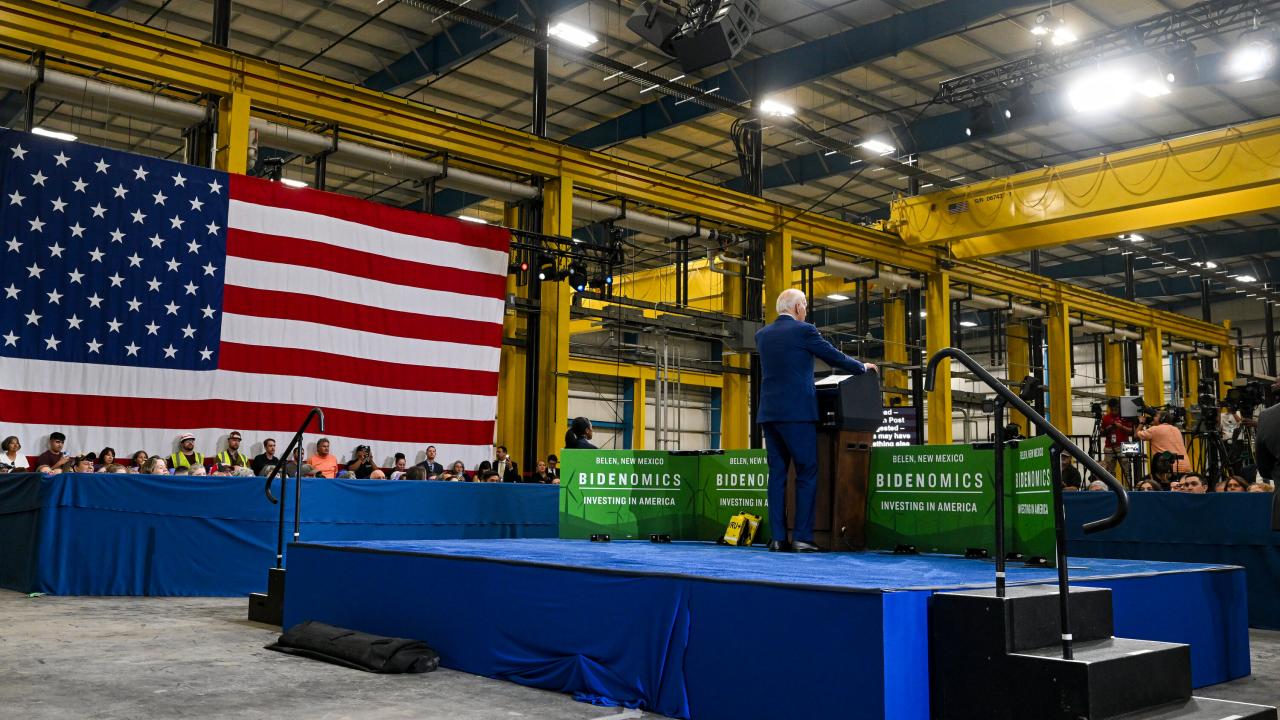
In the realm of American politics, the economy often serves as a pivotal battleground, shaping voter sentiment and influencing election outcomes. President Biden’s economic policies are strategically framed as a campaign strategy to sway voters, emphasizing the benefits of his administration’s approach and highlighting economic progress.
Economic Progress and Voter Sentiment
The Biden administration has consistently emphasized the economic gains achieved under his leadership, particularly focusing on job creation, wage growth, and a decline in unemployment rates. These positive economic indicators are strategically presented as evidence of his administration’s success in navigating the COVID-19 pandemic and fostering economic recovery.
The administration’s messaging aims to connect these economic achievements directly to the well-being of American families, emphasizing the tangible benefits of Biden’s policies. This approach seeks to create a narrative of shared prosperity and economic security, resonating with voters who prioritize economic stability and opportunity.
The Impact of Economic Indicators
Economic indicators, such as inflation and unemployment rates, exert a significant influence on voter perceptions and election outcomes. High inflation rates can erode public confidence and lead to dissatisfaction with the incumbent administration, as voters perceive a decline in their purchasing power and economic security.
Biden’s economic strategy is a high-stakes gamble for the upcoming election. While he’s pushing for a strong economy, a recent study raises concerns about the impact of caffeine on blood pressure. The study, should hypertension patients drink coffee or tea new study reveals best beverage choice , might have implications for voters’ health choices, especially those with hypertension.
Whether these factors will ultimately sway voters remains to be seen, but they highlight the complex interplay of health, economic policy, and the upcoming election.
Conversely, low unemployment rates and strong job growth can bolster public support for the incumbent, signaling a healthy economy and providing a sense of optimism.
“The economy is always a major issue in elections, and it’s likely to be even more important in 2024, as voters grapple with the lingering effects of the pandemic and high inflation.”
Biden’s bet on the economy as his election strategy might be facing a headwind. While he’s touting job growth and economic recovery, the recent news that the National Archives was allegedly told to suppress a statement on the Penn Biden document search, as reported here , could shift the focus away from economic gains.
This controversy, if it gains traction, could overshadow Biden’s economic message and hurt his chances in the upcoming election.
Political Analyst, [Source Name]
The Biden administration acknowledges the impact of inflation on voters and has implemented measures to address it, such as the American Rescue Plan, which provided economic relief to households and businesses. However, the effectiveness of these measures in mitigating inflation remains a subject of debate, and voters will likely evaluate the administration’s handling of this issue as a key factor in their voting decisions.
Economic Challenges and Opportunities
The United States faces a complex economic landscape, navigating a confluence of challenges and opportunities. Inflation, supply chain disruptions, and geopolitical uncertainties have created headwinds for economic growth, while technological advancements and a burgeoning green energy sector present potential avenues for prosperity.
Inflation and its Impact
Inflation has become a major concern, eroding purchasing power and impacting consumer confidence. The Consumer Price Index (CPI) has surged, driven by factors such as supply chain bottlenecks, strong consumer demand, and rising energy prices. This has led to higher prices for essential goods and services, putting pressure on household budgets and potentially hindering economic growth.
Supply Chain Disruptions and their Consequences, Biden bets on economy as election strategy
The COVID-19 pandemic exposed vulnerabilities in global supply chains, leading to shortages of essential goods and components. This has resulted in production delays, increased costs, and a decline in economic activity. The ongoing war in Ukraine has further exacerbated these disruptions, impacting energy supplies and agricultural production.
Geopolitical Uncertainties and their Economic Implications
The global political landscape is characterized by heightened tensions and uncertainty. The war in Ukraine, the rise of China, and ongoing trade disputes have created economic volatility and increased risk aversion among businesses. These factors can hinder investment and slow down economic growth.
Biden’s Economic Strategy: Addressing Challenges and Creating Opportunities
President Biden’s economic strategy aims to address these challenges and create opportunities for economic growth. Key components of his approach include:
- Investing in infrastructure:The Bipartisan Infrastructure Law allocates significant funds to modernize roads, bridges, airports, and broadband networks. This investment is expected to create jobs, boost economic activity, and enhance long-term competitiveness.
- Promoting clean energy:The Inflation Reduction Act includes substantial incentives for clean energy investments, aiming to reduce greenhouse gas emissions and create jobs in the renewable energy sector. This shift towards a greener economy is expected to drive innovation and economic growth.
- Addressing supply chain vulnerabilities:The administration has implemented policies to strengthen domestic supply chains, reduce reliance on foreign suppliers, and enhance resilience against disruptions. This includes measures to support domestic manufacturing and incentivize reshoring.
- Promoting competition:The administration has taken steps to promote competition in key sectors, such as technology and healthcare, aiming to lower prices, improve consumer choice, and enhance innovation. This includes antitrust actions against dominant companies and efforts to reduce barriers to entry for new businesses.
Biden’s bet on the economy as his election strategy is a high-stakes gamble, but recent shifts in the political landscape might be giving him an edge. According to political analyst Arnon Mishkin, the Trump vs. Biden race is suddenly shifting, and that gives the president this key opening to capitalize on.
If Biden can successfully highlight economic improvements and maintain momentum, it could significantly impact his chances in the upcoming election.
- Investing in workforce development:The administration has focused on expanding access to education and training programs, aiming to equip workers with the skills needed for the 21st-century economy. This includes investments in apprenticeships, community colleges, and job training programs.
Risks and Limitations of Biden’s Economic Policies
While Biden’s economic strategy offers potential solutions to pressing challenges, it also faces risks and limitations:
- Political polarization:The highly polarized political environment in the United States could hinder the implementation of key economic policies. This could lead to gridlock, delays, and ultimately undermine the effectiveness of the administration’s agenda.
- Global economic conditions:The global economy faces significant challenges, including rising interest rates, inflation, and potential recessions. These external factors could impact the effectiveness of domestic economic policies and limit the scope for growth.
- Fiscal sustainability:The administration’s spending programs, while aimed at stimulating economic growth, raise concerns about fiscal sustainability. The rising national debt could lead to higher interest rates, crowding out private investment, and ultimately hindering economic growth.
Economic Policy and the Future of the United States: Biden Bets On Economy As Election Strategy
The economic policies implemented by the Biden administration have significant implications for the long-term trajectory of the United States. These policies aim to address economic challenges, foster growth, and promote social equity. The impact of these policies on various aspects of the economy, such as job creation, income inequality, and technological advancements, will shape the future landscape of the nation.
Economic Growth and Job Creation
The Biden administration’s economic policies aim to stimulate economic growth and create jobs through various initiatives. These include infrastructure investments, support for clean energy, and investments in education and research. The American Jobs Plan, a major component of the administration’s economic agenda, proposes substantial investments in infrastructure, such as roads, bridges, and broadband internet.
These investments are expected to create millions of jobs, boost economic activity, and enhance the competitiveness of the U.S. economy.
Social Equity and Income Inequality
Biden’s economic policies also address issues of social equity and income inequality. The administration’s policies aim to expand access to affordable healthcare, childcare, and education, particularly for low- and middle-income families. The American Rescue Plan, a stimulus package enacted in 2021, provided direct payments to individuals, expanded unemployment benefits, and funded vaccine distribution.
These measures helped to mitigate the economic impact of the COVID-19 pandemic and provided relief to vulnerable households.
The Legacy of Biden’s Economic Policies
The long-term legacy of Biden’s economic policies will depend on their effectiveness in addressing key challenges and achieving desired outcomes. If the policies succeed in stimulating economic growth, creating jobs, and reducing income inequality, they could have a lasting positive impact on the U.S.
economy. However, if the policies fall short of their goals or encounter unforeseen challenges, their legacy may be less impactful.
Last Point
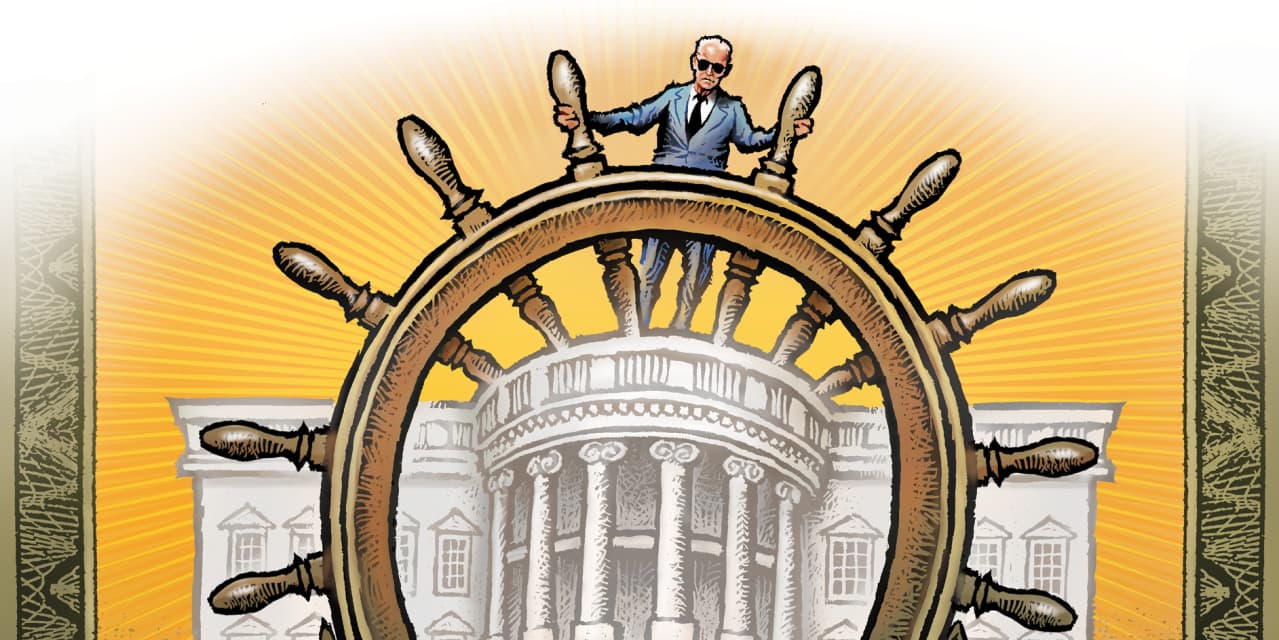
The success of Biden’s economic strategy will ultimately hinge on its ability to deliver tangible benefits to voters, particularly in the face of persistent economic headwinds. The election will likely be a referendum on the economy, with voters assessing whether Biden’s policies have made their lives better.
Whether his gamble on a strong economy will pay off remains to be seen, but the stakes are high, and the economic narrative will undoubtedly play a pivotal role in the upcoming election.


